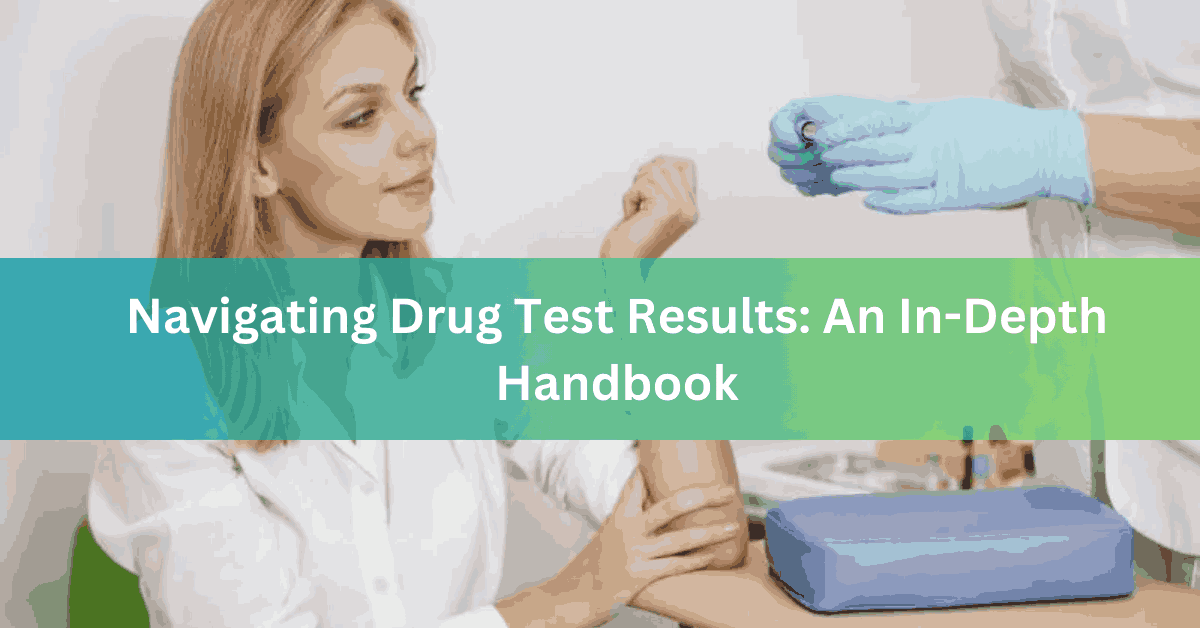Navigating Drug Test Results: An In-Depth Handbook
Drug tests are a common step in getting a job and sometimes for keeping one. They help companies make sure their workplace is safe and that employees can do their jobs well.
This handbook will guide you through what drug test results mean, what they can and can’t tell you, and what happens after a test. They’ll simplify understanding how drug tests work and what you should know about them.
Understanding drug tests can be tricky, but it’s important for both employers and employees. Knowing what the results mean can help everyone make better decisions. Let’s dive into the basics of drug test results and what they really tell us.
Understanding Drug Test Results
When you take a drug test, the results can either be negative or positive. A negative result means that the test found no drugs in your system. This is usually the outcome everyone hopes for, especially when applying for a job. On the other hand, a positive result means that the test found some drugs in your body. This can be worrying, but knowing what it means and what to do next is important.
Understanding these results is key to moving forward, whether you’re being tested or doing the testing. Knowing what these outcomes mean can help clarify any confusion and clarify the next steps for everyone involved.
What does a negative result on a drug test indicate?
A negative drug test result means that no drugs were found in the person’s system. This result is what most people and employers want to see. It usually means the person can safely work and hasn’t taken any substances the test was looking for. This can make things smoother for getting or keeping a job.
A negative result is good news for most situations. It suggests that the person is ready and able to meet job expectations without the concerns that come with drug use. It’s a green light in many employment and legal scenarios.
What does a positive result on a drug test signify?
A positive drug test result means the test found some drugs in the person’s system. This can be concerning for both the person tested and the employer. It might suggest that the person has been using drugs, which can be against company policy or affect their ability to work safely.
However, a positive result doesn’t always mean the person regularly uses drugs. Sometimes, medications or other substances can cause a positive result.
What information is unattainable through positive drug test results?
Positive drug test results can tell you that drugs were found in someone’s system, but they can’t tell you how much the person took or when they took it. They also can’t tell you if the person has a problem with drugs or if it was a one-time thing. There are a lot of details that a simple positive result can’t explain.
These limitations mean that while drug tests can be helpful, they don’t give a full picture of someone’s drug use. Understanding this can help employers and employees discuss test results more openly and fairly.
What are the threshold levels for pre-employment drug screening?
A Pre employment drug screening has specific levels that tests look for to decide if a result is positive. These levels are set to ensure the test doesn’t pick up on tiny amounts of drugs that might not affect someone’s work. Each drug has its own level, and these levels help make the test fair.
Knowing these threshold levels is important because it helps everyone understand what the test is really looking for. It also means that not every tiny drug trace will produce a positive result, which can be reassuring for people taking the test.
What factors can lead to a false-positive test result?
Sometimes, a test says someone has drugs in their system when they really don’t. This is called a false positive. It can happen for a few reasons, like eating certain foods, taking legal medications, or even using some everyday products. These situations can be stressful, but knowing that false positives can happen is important.
When a false-positive happens, it’s usually a good idea to do another test to make sure. This helps prevent any unfair decisions based on the first result. Knowing what can cause these false positives can also help people avoid them before taking a test.
What elements are included in drug testing?
Drug testing can look for a lot of different drugs, from common ones like marijuana and cocaine to prescription medications that can be misused. The test might also look at alcohol levels. What the test looks for usually depends on the job and the company’s policy.
Understanding what the test includes can help people know what to expect and why certain substances are being checked. It also helps make the process more transparent for everyone.
5 Commons Types of Drug Testing
1. Urine Tests: These are the most common and can detect many types of drugs.
2. Blood Tests: These are very accurate but more invasive and expensive.
3. Hair Tests: These can show drug use over a longer period, up to 90 days.
4. Saliva Tests: These are easier to do and less invasive but might not detect drugs for as long as urine tests.
5. Sweat Tests: These involve wearing a patch for a week or more to collect sweat for testing.
Each type of test has its own benefits and is chosen based on what’s needed. Knowing about these can help people prepare for what kind of test they might have to take.
What to Do After Receiving Positive Drug Test Results?
If you get a positive result, don’t panic. The first step is to confirm the result with another test, especially if you think it might be a mistake. If the result is still positive, it’s important to talk about it openly, especially if it’s due to medications or a one-time mistake.
Employers should handle these situations carefully and fairly, considering all the facts before deciding. It’s about balancing keeping the workplace safe and treating people fairly.
Drug tests are a part of many people’s work lives, and understanding them is important for both employers and employees. Knowing what different results mean and what to do about them can make the whole process less stressful. By understanding these tests better, you can use them more fairly and effectively, making sure the workplace is safe without being unfair to anyone.




